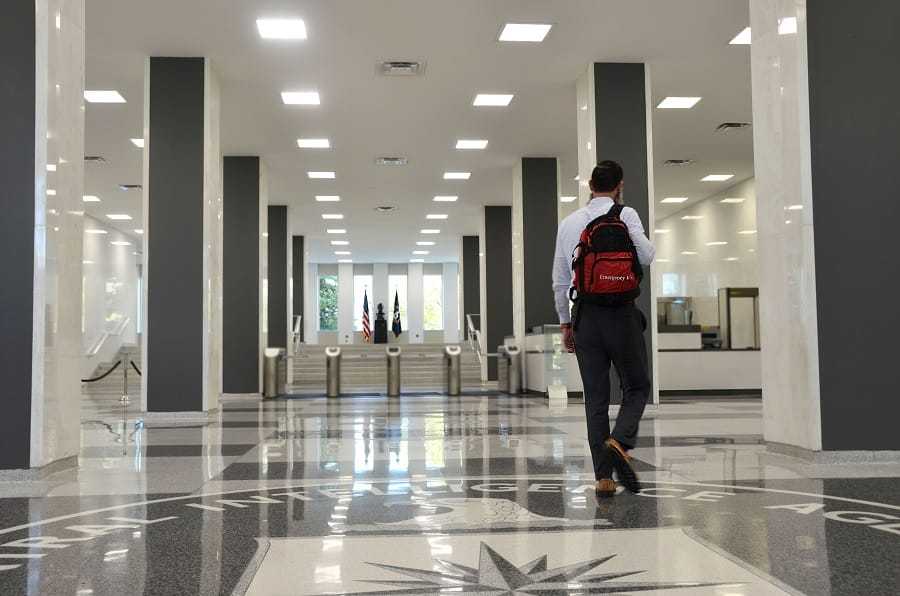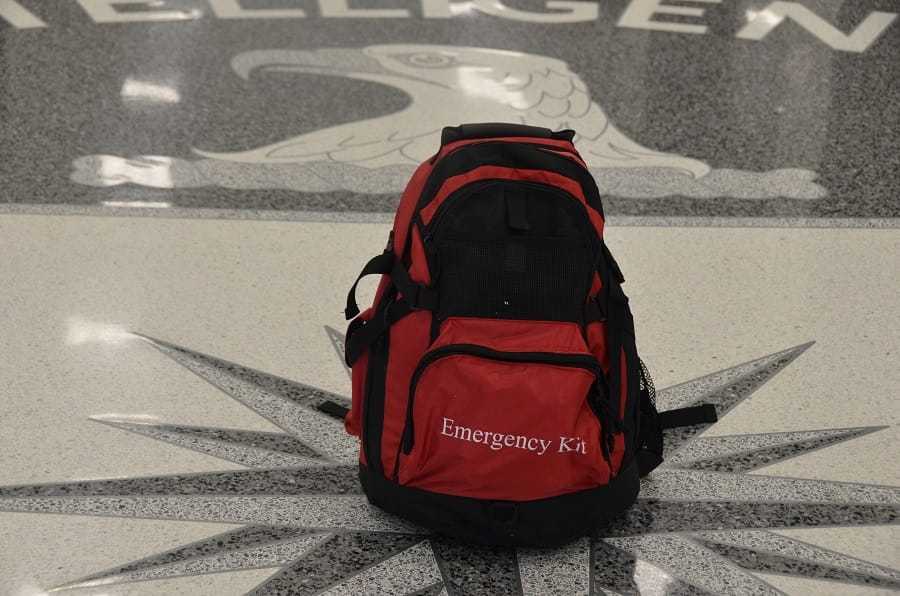
Dear Molly,
I’ve been closely following the news out West and the devastation caused by wildfires that continue to burn. Though we don’t live in the area, it got me wondering if my family is prepared to handle a natural disaster like that. What can I do? #AskMollyHale
~Not Your Average Prepper
* * * * *
Dear Not Your Average Prepper,
Great question! Unfortunately, many people don’t think about these types of things until disaster strikes. It’s great that you’re thinking about emergency preparedness now.

At CIA, we spend a lot of time discussing emergency preparedness and planning with our officers, who often find themselves working in all kinds of remote—and sometimes dangerous—places around the world. Often villages, towns or even cities are ill-equipped to handle major emergencies. What those emergencies might look like (hurricanes, earthquakes, civil unrest, violent uprisings or wildfires, etc.) can be hard to predict, but a well thought-out emergency plan, paired with regular drills and the right equipment, can put you in a better position to weather the storm, whatever form it takes.
I asked our Office of Security for tips on developing an emergency action plan, and they had lots of suggestions. They also recommended that everyone learn how to create a “go-bag.” (A go-bag has important items that you may need during an emergency) Hopefully you’ll find these tips useful for you and your family.
Tips for Developing an Emergency Action Plan
An emergency action plan is, simply put, the plan of action for you and your family if a crisis arises. It’s important to discuss (and write down) your plan so you and your family know exactly what to do during an emergency. Remember: Planning shouldn’t be done in isolation. Every member of your family should be included and actively contribute. Here are a few things you should consider discussing when creating your emergency plan:
- Be aware: What sort of natural disasters are frequent to your area? How might they affect your access to resources, roads or general infrastructure? Does your area have an emergency alert system? Do you know how you might be able to access it? These types of questions can help you shape your family’s planning meeting.
- Establish a communication plan: The odds of you and your family being in the same location during an emergency are slim, so planning for communications is critical. Who is the primary point of contact for the family? What about a secondary point of contact, if your primary point of contact can’t be reached? What should you do if you don’t have a cell phone or if it isn’t working? Larger families should establish a ‘phone tree’ system in which each person is responsible for establishing contact with a particular person or set of persons.
- Identify meeting points (primary/secondary/tertiary): If you and your family aren’t able to make contact with one another it’s important that everyone knows the location of designated meeting points. Meeting points should be familiar places around town where you and your family can plan to meet if an emergency were to occur while you were separated. It is best to pick locations that are familiar to your family, such as your home or that of a relative. Other options can include schools or local civic buildings. Be sure to have a few back-up locations just in case you can’t reach the first one. For instance, if the primary location is home but the roads are blocked, everyone should know to make their way to a secondary location, like a school or a grandparent’s house.
- Consider the specific needs of your household: You can easily find an off-the-shelf emergency action plan on the Internet, but is it going to address the needs of your family in your specific area? Probably not. An emergency action plan should take into account precautions that are unique to you and your family. Perhaps you have a family member in a wheelchair; if so, your designated meeting points should take handicap accessibility into consideration. Do you have pets? Make sure you have food/water, vaccination records, proof of ownership and even a photo of your pet, in case you get separated. Check out the website for the Federal Emergency Management Agency (FEMA) for more information on how to prepare your pets for an emergency.
- Plan evacuation routes: An emergency could require that you and your family quickly evacuate the area. If so, you need to be aware of all possible evacuation routes, without relying on GPS. Try to memorize these routes. That way you can evacuate an area safely and quickly—even if some roads are blocked and communication networks aren’t working.
- Practice, practice, practice: An emergency plan is no good if it sits in the kitchen drawer unread and unused. It is important to commit the plan to memory. Our security officers encourage all of us at CIA to not only plan for emergencies, but also to practice them, both at home and at work. When practicing, throw in some curveballs that require you and your family to fall back on secondary plans or even completely unplanned options.
Building the Perfect Go-Bag

According to FEMA, people should be prepared to take care of themselves and family members for up to 72 hours, or three days, following a disaster. To do this effectively you should collect and consolidate the appropriate materials at a well-known location in your home, work or vehicle ahead of time. We recommend consolidating the items into what we call a “go-bag,” so named because it is a tool that is intended for use in ‘on-the-go’ situations, such as a hasty evacuation.
As some of our officers can attest, multiple go-bags scattered throughout the house, vehicles and your workplace might be the best solution. You never know where you’ll be when disaster strikes and having a go-bag within arm’s reach can mean the difference between life and death.
Contents of your go-bag should (at a minimum) include:
- 1 gallon of water per day (or purification tablets)
- Spoil-free food (i.e. protein bars)
- First aid kit (with any prescription medications needed)
- Light source (flashlight, glow sticks, etc.)
- Spare batteries- (replenish them regularly)
- Disaster plan with contact numbers, map and evacuation routes
- Copies of passports and other critical documents
- Warm blanket and several space blankets
- Change of clothes with sturdy shoes
- Hygiene supplies
- Multi-tool (i.e., one that includes tools like a knife, screw driver and tweezers)
- Cash and traveler’s checks
- Matches or other fire starter in a waterproof case
- Waterproof storage
- Paper and pencil
- Cell phone with emergency contact numbers and charger
- Portable power bank for cell phones
- Emergency repair kit (parachute cord, duct tape, safety pins)
This is by no means an exhaustive list, but should serve as a reference as you build a more personalized list based on your needs and those of your family, as well as the specific threats or challenges you are likely to face in your part of the world. If, for instance, you live along the coastline, you may want to put more time/effort into waterproofing your go bag and its contents. Those living or staying in areas of earthquake activity should consider including temporary shelters and focusing on communications, as cellular towers could be impacted.
Hopefully these tips are helpful!
Stay safe,
~ Molly

